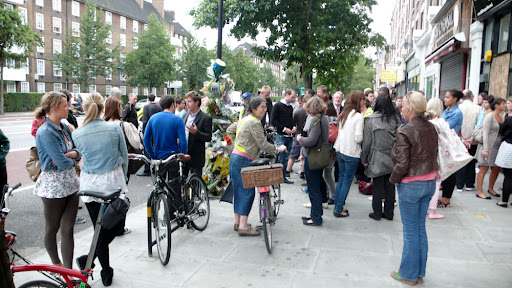Boris Johnson likes to label himself as the “cycling mayor” who wants to kick-start a cycling revolution in London. 2010 was supposed to be “the year of cycling”. However, a lot of cyclists have the impression that their needs aren’t really respected by traffic planners in London.
Interestingly, figures released by Transport for London in their latest “Travel in London” report compellingly show that they have a point. According to data published in Chapter 9 (“Transport and quality of life: Customer satisfaction and perception”), cyclists in London are by far the least satisfied users of roads in the capital.
The authors of the report put it this way:
“Satisfaction levels were similar for users of all road modes except cycling, where satisfaction was significantly below average at 67 out of 100.”
How severe the level of frustation is becomes clear if you compare the statisfaction of cyclists to the statisfaction of Tube users. There is a lot of moaning and complaining going on about the Tube: fares, punctuality, crowding. However, the average cyclist in London is significantly less happy with the road network than the average Tube passenger is with the Tube. According to the report, the overall satisfaction of Tube users is at 79 out of 100. Even with regard to train crowing, Tube users are more satisfied than cyclists are with London roads (72 out of 100).

This frustration of cyclists is confirmed by other results. For example, the conditions of cycle lanes get the worst marks at all. Amazingly, this aspect even fares below traffic congestion! The satisfaction with the availability of cycle lanes and advanced stop lines is also significantly below average.
Here’s another evidence that London is massively neglecting cyclists:

Taken together, from my perspective these results are pretty devastating.
The report states that
“the Mayor has made it a particular priority to improve the quality of Londoners’ overall daily travel experiences. The substantive outcomes of these policies should be visible, in due course, in the various formal and informal performance measures considered elsewhere in this report”
If this pledge, the fuss about the “cycling revolution” and the results in the report were taken seriously by London’s policy makers, improvements to the cycle infrastructure would be of utmost priority. Why do I have a hunch that this is not the case?
Thanks to the “Love London, Go Dutch” campaign we talk a lot about making London more like Amsterdam. However, judged by the low satisfaction of cyclists with the road network, it would be nice to make London (for cyclists) at least like London (for cars).

Asked about our general satisfaction with their most recent journey, we are happier than the users of public transport and cars. This proves the vast benefits of cycling: It is quicker and cheaper than most other means of transport.
Even the wretched road network and the biased priorities of London’s traffic planner cannot botch this!












